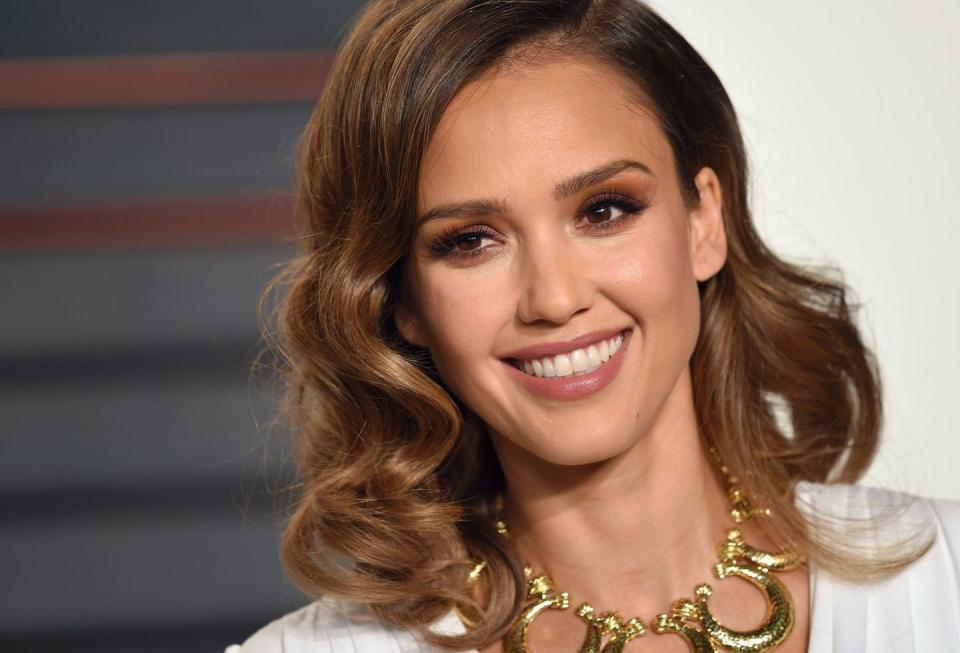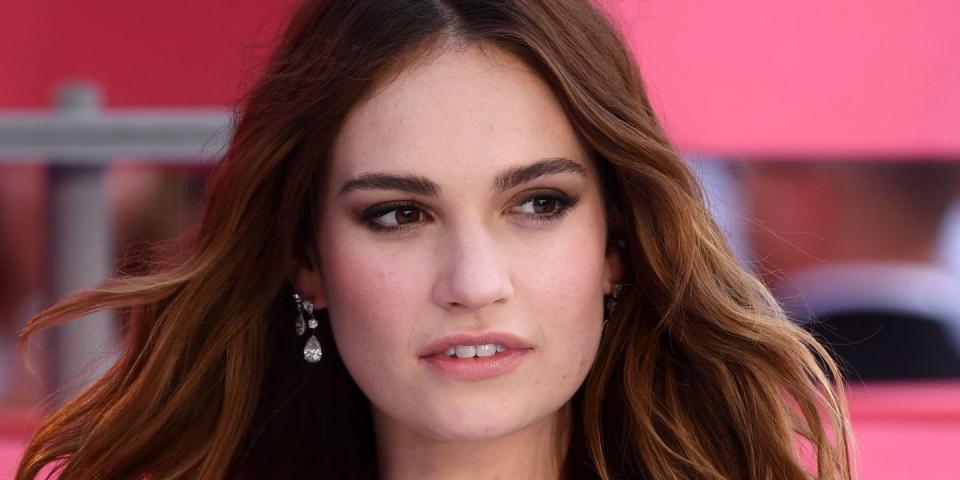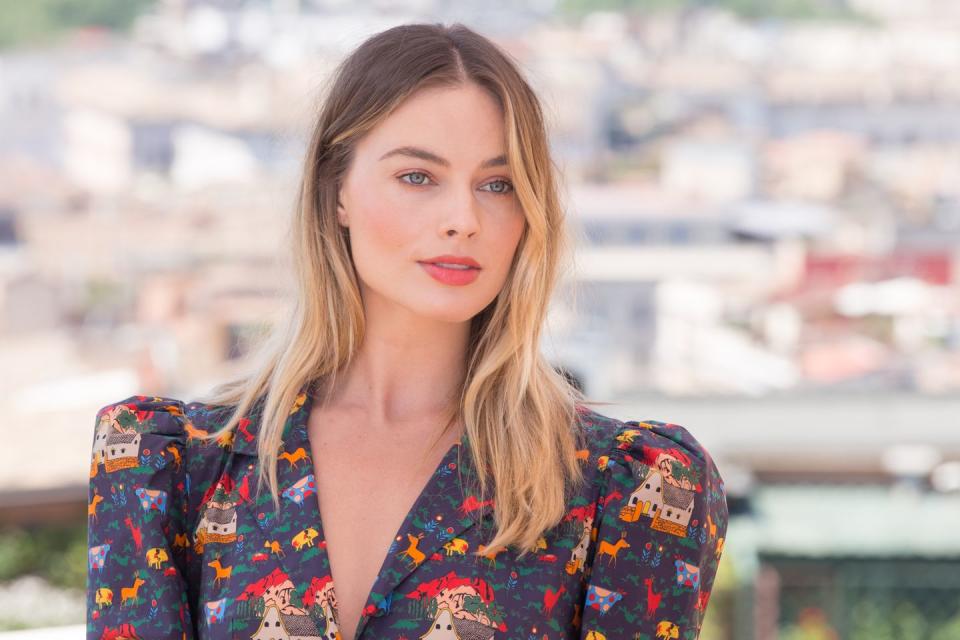Everything You Ever Wanted To Know About Getting Your Hair Balayaged

When we first heard about Balayage, it was a hair game changer.
No longer did we have to sit, head in foils, for what felt like three days only to end up with hair so stripy it brought to mind images of Nicole Richie circa 2003.
No, because Balayage is the hair dye trend that changed everything.
From Alexa Chung to Rihanna, anyone who was anyone was asking for Balayage to achieve that dreamy 'just been kissed by the sun in the Maldives' caramel hair.
But could we explain what it was? Probably not...
Until now. We caught up with pro international colourist based at Paul Edmonds hair salon, Jack Howard, and John Frieda colourist Shannon Gallacher to find out exactly what Balayage is and what all the hype's about...

Everything You Need To Know About Balayage
What is Balayage?
'Balayage is a French word meaning "to sweep" or "to paint"', explains Howard. 'It allows for a sun-kissed natural-looking hair colour, similar to what nature gives us as children.'
What is Ribbon Blonde Balayage?
Summer 2021 is nearly here and with it, the newest interpretation of balayage: Ribbon Blonde. Originating in Australia (home of the sun-kissed blonde look, obvs), Ribbon Blonde is the ultimate out-of-lockdown transition colour for those who have come to love their natural shade but want to zhush it up a bit.
Infusing tonal 'ribbons' of blonde against a darker backdrop, this style of balayage nods to an awareness of how attitudes have changed towards colour upkeep during the pandemic.
The best part is that it's completely customisable and therefore looks great for every hair type and skin tone. Whether you want the blonde to add high contrast definition or something a bit softer, your colourist can incorporate a mix of blonde tones for Bondi-beach worthy dimension.
What is 3D Balayage?
Surely all hair is 3D right? Well, arguably a dodgy dye job can make your hair colour look as flat and lifeless as if you'd hair straightened it within an inch of its life. Which is where 3D Balayage comes in.
The latest techy update on the classic Balayage hair dye technique, 3D Balayage is all about adding multi-tonal dimension - think of it like contouring for your hair.
'3D balayage is great because it takes traditional balayage and makes it more multi-tonal, instead of streaky or flat', colour specialist at Jo Hansford salon in Mayfair, Shannon Lewis, told Refinery29. 'Rather than dyeing the hair with one single lighter colour, there are two shades, and one is always slightly darker.'
The result? Ultra 3D looking lights and shadows that create the illusion of thicker, more voluminous hair without any harsh lines or streaky highlights.
How can you tell if your Balayage has been done properly?
'The Balayage pieces should be very close and soft at the root leading to a thicker highlight at the ends of the hair,' says Howard. 'Balayage should be applied on the surface of the section and not saturated through the section until the very tips, otherwise you would have a streak of colour that isn't vey soft at all.'

What is Smoky Gold Balayage?
2021's most luxe take on the Balayage hair trend, Smoky Gold is the moody update your hair needs this winter. 'Smoky gold is going to blow up', colourist Cassondra Kaeding told Refinery29.
'Most people gravitate to cool colours this time of year, but this take on dark blonde is within the comfort zone because it picks up on ash and espresso tones, just with a subtle gold lift at the face frame and ends. The result is soft and blended — and a gloss finish gives it that gorgeous shine.'
How can you tell if your Balayage has gone wrong?
If the right products aren’t used and monitored, or product is rinsed off too quickly the hair may not lift correctly and will appear orange.
It's important when using bleach that the person applying it knows when to take it off - this depends on your hair type and colour. If you think your Balayage looks patchy, this will be because of wrong application and placement.
Remember, Balayage is an art so either go to a professional or make sure you watch plenty of tutorials before attempting at home.

What should you do if your Balayage has gone wrong?
If you've had Balayage but aren't happy with the result, don't worry, this can be fixed but may involve a colour correction depending on the damage.
This could involve various techniques including a root melt and blending the Balayage or toning down and starting again. Always go to a professional for a consultation and opinion.
What's the difference between Balayage and Ombré?
'Balayage is a French word that means to sweep or paint; it's a highlighting technique. Ombré means to shadow, and it's a seamless gradiation from darker to lighter,' explains Howard. 'People do get confused by the two but you can also combine them in a merged technique which can be very pretty.'
Sombré is a much softer version of ombré and is still popular, especially with the charcoal grey trend.
What's the difference between Balayage and highlights?
Balayage has softer, less noticeable regrowth lines than traditional highlights - the principal idea being less is more when creating soft, natural looks. There's no stripy look like you can get with foil highlights, Balayage emulates the parts of your hair that would naturally lighten in the sun.
Also, Balayage is a freehand technique as no foil or meche are used to create the highlights.
Why is Balayage better?
'Since 2010 I've been saying that foil highlights are dying out - it's such an 80's look and certainly not something the modern woman wants,' says Howard. 'Look at most A-list celebs and you rarely see a classic foil highlight, you see Balayage and merged techniques like ombre and Balayage, or Babylights and balayage.
'These techniques work with the individual's haircut and natural hair growth patterns as well as the variance of tones in the hair, for a totally bespoke finish. Because it's hand-painted, your colourist can choose the placements to best complement your haircut, skin and features so it looks really natural rather than actually coloured.
'It's also super speedy, meaning you don't have to sit so long in the chair, and it grows out beautifully meaning less maintenance, so less frequent appointments.'
What should you do before getting Balayage?
1. Talk About It
'I really passionately believe that consultation is an essential part of the colour process - you should have a consultation with your colourist at least 48 hours before your appointment so that they can talk you through the options and give you an allergy test.'
2. Get Your Inspo Sorted
Take images in that you love to demonstrate what you're seeing in your head when you ask for balayage - either from a magazine or on your phone. Your colourist will be able to tell you if it'll suit your skin tone - there are so many great shades out there, some warm, some cool, but you need to get it right.
3. Find The Right Salon For You
Do your research before heading to the salon. Check out the Instagram page of your hair salon, every colour should look different. If the application is the same for each client then it's not unique to them - each client should have a bespoke application that works with their cut.

Does Balayage work on textured, kinky and afro hair?
'Balayage works on all textures, and in some ways curly hair is easier because you can pick out each curl you want to apply colour to. The pre-lightener (bleach) or colour choice is dependent on the finished look you want to achieve, not the texture.'
Are there any hair colours that don't work with Balayage?
'Balayage is a highlighting technique and can be used on any hair colour.'
Can you get Balayage if you have short hair?
'Absolutely - with short hair it's just the same principles, application is dictated by the haircut and should always flow naturally.'

What types of Balayage can you get?
'This year, I devised a menu of colour called 'Balayage-to-go', which reflects our modern lifestyles and the need to get things done quickly. The application time ranges from just 15 minutes to 45 minutes.'
The New Yorker - Done in just 15 mins at the backwash, these are super quick highlights that fit easily into your lunch hour. They touch the root and look effortless for the perfect pick-me-up. As seen on Poppy Delevingne.
The Rio - Think contouring for the hair, ask for pieces to frame the face, around the parting and touching the root, this takes just 30 mins. As seen on Ana Beatriz Barros.
The Londoner - Nothing touches the root - it's a creative Balayage for a cool, more lived-in look and takes 30 mins. As seen on Vanessa Kirby.
The LA - For blondes who want to be blonder, we add super blonde pieces in a combination of root touch around the face, and more lived in everywhere else. We use a 'base break' where we lift the natural base to soften the natural colour and make it appear much blonder.This takes 45 mins. As seen on Michelle Williams.
'My newest balayage is...
The California - I did this on Vanessa Kirby for her role in Mission Impossible. It's the perfect summer blonde - a much heavier incarnation of classic Balayage with a slightly lived-in root and much more of the hair is coloured.
'It can be tailored to any skin tone - anywhere from pale icier blondes, to golden shades can be used. It's a gorgeous low-maintenance colour to take you through the entire summer as it'll start out heavy and then grow out into a lived-in finish so the upkeep is completely dependent on the wearer.'

Like this article? Sign up to our newsletter to get more articles like this delivered straight to your inbox.
In need of more inspiration, thoughtful journalism and at-home beauty tips? Subscribe to ELLE's print magazine now and pay just £6 for 6 issues. SUBSCRIBE HERE
You Might Also Like

 Yahoo Movies
Yahoo Movies 
